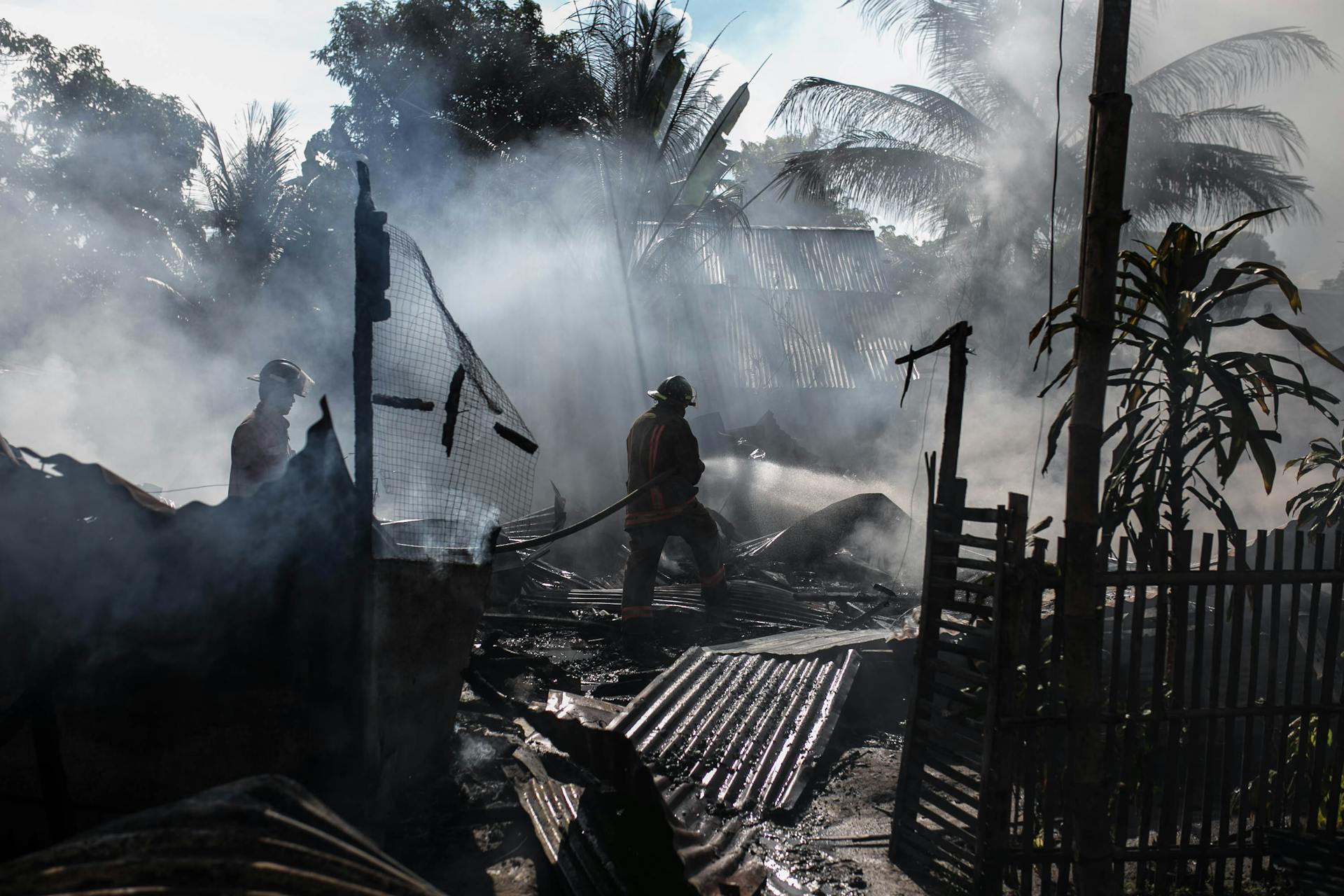
The 1996 Everest disaster teaches us essential lessons about leadership drawing on the disastrous tragedy that occurred when a powerful storm swept over the mountain obscuring visibility, and 23 climbers struggled for survival. The head catastrophe resulted in eight people dying while trying to reach the summit. This unprecedented disaster exposed conflicting ideas and problematic behavior among experienced trek leaders Rob Hall and Scott Fischer, highlighting the inherent danger of climbing Everest.
The decision-making abilities of leaders are crucial in situations where lives are at stake. A team requires a strong leader who can make decisions that will keep everyone safe, even if those decisions are unpopular. As Roberto concludes, behavioral decision-making is impaired by common cognitive biases. Predictable cognitive biases impair judgment, making it challenging for people to make rational choices when facing difficult situations such as those encountered on Everest. A true leader must be aware of these common cognitive biases and find ways to overcome them during times of crisis.
Why We Can't Let Go: Understanding the Sunk-Cost Effect

Understanding the Sunk-Cost Effect is vital in preventing future massive failures like the 1996 Everest disaster. The sunk-cost effect tends to drive people to continue investing considerable resources -- time, money, and effort -- into past investment decisions despite consistently poor results. It seems irrational, but rational people often ignore common sense allowing past investment decisions to affect their future choices.
The trek up Everest is incredibly expensive; climbers can spend years training and thousands of dollars on equipment and permits. The final push to the summit is an 18-hour-long climb that requires perfect timing and auxiliary oxygen bottles. At camp hall, Fischer knew that many of his team members were struggling with difficulty acclimating. Past Everest guides had reported climbers laughing at the mention of numerous deaths on the mountain. Still, he pushed on with his plan to have climbers summit at 100 pm and 200 pm. Twenty-three climbers made it to the top by 100 pm, while another group of climbers made it by 200 pm. Roberto writes that Doug Hansen was still on a final descent down when Krakauer reached him at around 330 vertical feet from Camp Four at 400 pm.
The sunk-cost effect can be incredibly motivating but not always logically sound for experts and novices alike. It's a cognitive bias that drives us to continue pursuing something even when we know better or when all signs point towards failure ahead. The sunk cost effect played a significant role in the Everest disaster as climbers experienced severe blindness while pushing themselves beyond their limits to reach their goal despite knowing how dangerous it was. Understanding this psychological phenomenon can help prevent similar tragedies in the future by recognizing when we may be falling victim to it and making informed decisions based on current circumstances rather than past investments or commitments.
Ask Marc | Free Business Advice Session with the Co-Founder of Netflix
Are you looking for some free business advice? Then don't miss this opportunity to join a live session with the Co-Founder of Netflix, Marc Randolph. On June 8th at 3 pm EDT, he will be answering questions and sharing his insights on entrepreneurship, innovation, and leadership. Don't miss this chance to learn from one of the most successful entrepreneurs in the world!
Master Coding for Less Than $2 a Course with This Jam-Packed Bundle
Make coding understandable with this beginner-friendly coding bundle that teaches you how to master coding for less than $2 a course. With the 1996 Everest disaster as a teachable moment, this jam-packed bundle provides you with all the tools needed to code like a pro. So if you're looking for an affordable and effective way to learn how to code, this is the perfect solution for you!
Save Time for Essential Courses with Expert Assistance
Save your time for essential courses by seeking expert assistance. With the abundance of academic assignments, it can be challenging to keep up with every task and still maintain an excellent academic record. However, with the help of professional writers, you can get your essays done in no time. These writers are knowledgeable in over 3000 topics and have already written over 70000 essays, making them well-equipped to handle any assignment thrown their way. So why not save yourself some time and invest in expert assistance?
1. Cite this page
If you're writing an independent reading project or essay related to the 1996 Everest Disaster, it's important to properly cite your sources. When referencing the article "1996 Everest Disaster Teaches," make sure to include all necessary information such as author name (Farah Aboufakhr 6th Hour Hillary), date of publication, and website. Additionally, be sure to follow any specific citation guidelines provided by your instructor or professor.
In this article, Aboufakhr reflects on the lessons that can be learned from the tragedy that occurred on Mount Everest in 1996. She discusses everything from human body functions at high altitudes to observing participants interact during an Everest simulation. Aboufakhr also touches on the role of Sherpa assistants in guiding clients up the highest mountain in the world and how this can be a valuable business opportunity for those living in Nepal, one of the poorest countries with limited natural resources but full of scenic beauty including highest ranges of Himalayas.
Overall, "1996 Everest Disaster Teaches" is a valuable resource for anyone interested in disaster preparedness planning and similar topics like BP oil spill, ecological footprint, banning plastic, clean water initiatives and more. By citing this page properly and incorporating its insights into your work, you'll save time and ensure that your arguments are backed up by verified experts.
A collaborative leader creates a safe, clear, and cohesive environment for the group’s work. He or she:
A collaborative leader plays a crucial role in creating a conducive environment for the team's work. They ensure that the group members feel safe, clear, and cohesive in their tasks. In the 1996 Everest disaster, this leadership quality was missing, leading to tragic consequences.
The central switching station monitoring is one of the critical aspects of any expedition team. However, in the case of the 1996 Everest disaster, poor coordination led to miscommunication between team members. A collaborative leader would have been a catalyst mediating effective communication to ensure that everyone understood their roles and responsibilities.
Furthermore, a collaborative leader understands that each member of the team brings unique skills and experiences to the table. They leverage these strengths to create a highly effective communication and collaboration system within the group. This ensures that all team members are fully engaged in achieving their shared goals without feeling left out or undervalued. Ultimately, such an approach provides assurance that everyone is working together towards success.
When Being Prepared Fails: Why It's Not Always Enough

Why being prepared isn't always enough? The 1996 Everest disaster teaches us that even the best preparation can fail when faced with turbulent environments. Expedition leaders initially prepare to climb Everest by focusing tremendous energy on preparedness, physical training, supplies, equipment portage, and logistics. However, this excellent preparation isn't enough to guarantee a successful outcome. Interactions and relationships among team members are critical in achieving the team's goals.
A collaborative team with a consistent predictable collaborative leadership style can inspire team members to achieve their full potential. Limitations coaches who form teams made up of contractors, partners, and suppliers directly report that frequent project reviews are essential for continually checking assumptions learning in real-time and correcting mistakes promptly. Collaboration skills like communication, conflict resolution, and problem-solving are essential to building effective collaborative leadership teams that can avert potential disaster.
Foresight greatly enhances preparedness logistics to support teams in similar organizations. Devoting resources to promoting leadership and collaboration skills builds human capability by creating a strong grounding in collaborative skills. A consulting firm devoted to building collaborative learning capability called Learning Mastery (www.learnmaster.com) has developed a collaborative learning network for leading companies working together on projects to ensure success. Analysis includes how leadership played out within the organization deals with the current generation of business climate managers who need help improving their support teams' building collaborative skills.
A collaborative leader inspires the group through vision and character. He or she:
A collaborative leader inspires the group through vision and character. He or she has a compelling vision that motivates groups to work towards accomplishing extraordinary achievements. Such leaders are absolutely trustworthy and have the ability to maintain grace even in times of crisis.
Effective collaborative leaders collect input from team members and raise awareness of potential red flags. They stay aware of the big picture while making decisions that ultimately make the goal happen. Dissenters are engaged by collaborative leaders, who find ways to keep personal aspirations secondary and approach basic survival level as a team.
In crisis situations, team members approach basic survival level where everest survival means keeping blood circulating, staying warm, and avoiding frostbite or hypothermia. Similarly, managers in critical state organizations must find ways to muster additional resources to maintain the organization's core functions when crisis teams tend toward fight or flight instincts. Collaborative leadership is crucial in such situations as it helps create a complex web of team members whose actions are guided by a strong sense of what actions are needed to reach safety. Missing personal survival goals could lead to individual goals negating group goals and planning falls apart.
Join the Team: Explore Collaborative Leadership on Everest
The 1996 climbing season on Mount Everest was marked by tragedy, but it also provided valuable lessons about collaborative leadership. The IMAX expedition led by David Breashears succeeded in creating footage for the IMAX Everest movie while conducting scientific research. Putting team members' personal goals aside for the group goal of summiting Everest was key to Breashears's collaborative leadership style.
At base camp, Breashears took a team-building centered approach, creating opportunities for team members to get acquainted and bond socially. Mutual respect was fostered at dinner where team members contributed delicacies from their home cultures, resulting in a rich social context. As the IMAX team moved up the mountain, the movie helped bolster the teams spirit and create bonds.
On summit day, Breashears stopped filming and instead devoted his time to survivors by bringing them down and providing medical treatment. His actions saved climbers' lives, and his unwavering vision and integrity brought together an incredibly talented team that masteredly created a film part of which is available in Simon Schuster 1999 book "Into Thin Air". Ultimately this collaborative leadership ideal resulted in the IMAX team successfully summitted Everest and returned safely to base camp for memorial services.
A collaborative leader has a mastery of boundary-spanning skills, including capitalizing on the group’s diversity. He or she:
A collaborative leader has a mastery of boundary-spanning skills, including capitalizing on the group’s diversity. He or she leads in a highly collaborative manner taking good ideas from everyone and creating group cohesion. This type of leader understands that each team member brings different strengths and perspectives to the table. By utilizing these varying viewpoints, the team can solve problems more effectively while reducing stress levels.
One critical aspect of being a collaborative leader is managing conflicting opinions and ideas within a group. Arguments can arise when people have differing viewpoints, but a skilled leader knows how to keep these arguments balanced. They understand that if left unchecked, arguments can create a divisive win-lose element within the team, leading to resentment between members. By actively listening to each member and encouraging open dialogue, the leader ensures that everyone feels heard and valued.
Finally, collaborative leaders excel at making clear decisions based on input from all members of the team. They know that every individual has something valuable to contribute, and by gathering insight from everyone, they can make informed choices for the group as a whole. These types of leaders prioritize transparency and honesty in decision-making processes so that everyone understands why certain choices were made over others. Overall, mastering boundary-spanning skills is crucial for any person in leadership positions who wants their teams to function optimally.
These Are the Most and Least Affordable Places to Retire in The U.S.

Most people dream of retiring in a place that is affordable and easy on the wallet. According to Forbes, the West Coast is among the most expensive regions to retire in, while the Mountain State region tends to be more affordable. In fact, some states like Mississippi and Arkansas offer retirees an average cost of living that is 14% less than the national average.
Madeline Garfinkle, a writer for Forbes, suggests that retirees should consider factors like taxes, housing costs, and healthcare expenses when choosing a place to retire. States like Wyoming and New Mexico offer low property tax rates, while Florida has no income tax. Ultimately, it's about finding a balance between affordability and quality of life.
Frequently Asked Questions
What can we learn from the 1996 Everest expeditions?
The 1996 Everest expeditions taught us important lessons about the dangers of high altitude mountaineering, the importance of teamwork and communication, and the need for proper preparation and decision-making in extreme environments.
What do we need to know about learning organizations?
Learning organizations prioritize continuous learning and improvement, embrace change, encourage collaboration, and foster a culture of experimentation and innovation. They recognize that learning is essential to staying competitive in today's rapidly changing business environment.
What can leaders learn from the Everest case?
Leaders can learn that effective communication, teamwork, and decision-making are crucial in achieving success, especially in high-risk situations. The Everest case highlights the importance of trust, collaboration, and strategic planning in overcoming challenges and achieving goals.
What did Breashears and his group do to summit Everest?
Breashears and his group climbed Mount Everest using traditional mountaineering techniques and equipment, including ropes and oxygen tanks, over the course of several weeks, eventually reaching the summit on May 23, 1996.
Is Breashears the best example of collaborative leadership in rock climbing?
Although Breashears is a well-respected figure in the rock climbing community, there are many other examples of collaborative leadership within the sport, such as Lynn Hill and Tommy Caldwell.
Featured Images: pexels.com


